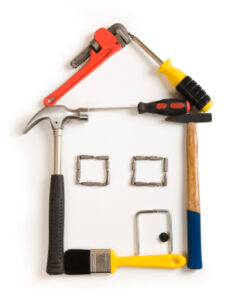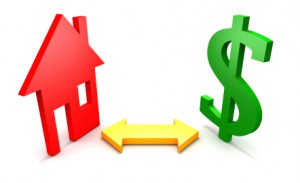Renewers, Have You Passed the Bank’s Laziness Test?
April 15, 2010Thirteen Tips for First-Time Home Buyers
April 19, 2010When rates fall, we can be forgiven for doing some quick math to figure out how much we would save by taking the lower rate vs. the more expensive one showing on our mortgage statement. The question then becomes, “Is now a good time to refinance?” and the answer depends on both the costs involved and your underlying reasons for refinancing.
how much we would save by taking the lower rate vs. the more expensive one showing on our mortgage statement. The question then becomes, “Is now a good time to refinance?” and the answer depends on both the costs involved and your underlying reasons for refinancing.
Refinancing to Get a Better Rate
To discourage borrowers from refinancing every time rates drop, lenders charge penalties which essentially offset any potential savings. Unless you are switching from a fixed to a variable rate, where the difference between the rates is usually greater than the penalty charged, it won’t leave you better off. In practice, refinancing at a new rate without borrowing more money usually only happens at renewal, when no penalties are applied. In that case, it’s important to survey the market because most lenders don’t offer competitive rates to existing customers at renewal. (For more on this, check out my blog post called “Renewers: Have You Passed The Bank’s Laziness Test?”)
Refinancing to Renovate
Our homes provide both a roof over our heads and an investment. By renovating wisely you can increase the value of your property while also enhancing y our enjoyment. In these cases, the costs to refinance your mortgage are usually small in proportion to the amount of new money borrowed so unless you are early in your mortgage term, this is an option worth considering. A quick tip for anyone considering a renovation: when you have a realistic idea of how much it will cost, add this amount to the price you paid for the house and check with your realtor or on www.mls.ca to ensure that your house isn’t about to become the most expensive property within a ten- kilometre radius!
our enjoyment. In these cases, the costs to refinance your mortgage are usually small in proportion to the amount of new money borrowed so unless you are early in your mortgage term, this is an option worth considering. A quick tip for anyone considering a renovation: when you have a realistic idea of how much it will cost, add this amount to the price you paid for the house and check with your realtor or on www.mls.ca to ensure that your house isn’t about to become the most expensive property within a ten- kilometre radius!
Refinancing to Invest Proceeds Elsewhere
Taking some equity out of your property to invest can help diversify your balance sheet, especially in cases where you have a small mortgage and limited outside investments. Using the proceeds to top up RRSPs has the added benefit of reducing your taxable income. If you want to invest outside of your RRSP, you can pay down your mortgage principal and then reborrow it to make the interest tax deductable.
Refinancing to Pay Down Non-mortgage Debt
You simply can’t get a better interest rate on a personal loan than you can by borrowing against your primary residence. If you are carrying balances on credit cards, car loans, unsecured lines of credit etc. you can substantially reduce your interest cost by rolling those debts into your mortgage. In these cases, I recommend sitting down with your mortgage agent and laying out a basic budget to ensure that the cash saved by refinancing is used to pay down the additional mortgage principal. Use the refinancing to strengthen your financial position rather than weaken it. (You don’t want your house to become an ATM – a quick look south will show you how that story ends.)
credit cards, car loans, unsecured lines of credit etc. you can substantially reduce your interest cost by rolling those debts into your mortgage. In these cases, I recommend sitting down with your mortgage agent and laying out a basic budget to ensure that the cash saved by refinancing is used to pay down the additional mortgage principal. Use the refinancing to strengthen your financial position rather than weaken it. (You don’t want your house to become an ATM – a quick look south will show you how that story ends.)
Reasons Not to Refinance
Not to sound too preachy, but I’m not convinced that refinancing your home to pay for a vacation, unless it’s on your bucket list, is a good way to spend your hard-earned home equity. Refinancing is best when it improves value, diversifies risk or leaves borrowers in a better financial position.
Whatever your reasons for refinancing, a good mortgage agent will minimize the costs, weigh the unavoidable ones against the benefits, and determine the ideal timing for the transaction. If you’re refinancing to pay down debt, your agent should also help you develop a budget to ensure that you really will be better off years down the road – a budget being essential equipment for the journey.







